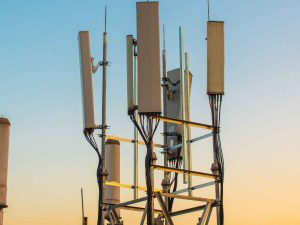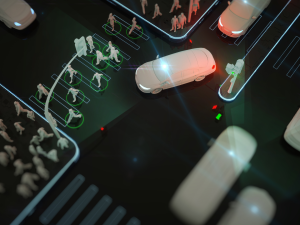5G Overview

Course Overview
This course provides a comprehensive coverage of all the key topics relating to 5G technologies and at an overview level. Participants will learn 5G technology drivers, 5G architecture, standardization, mobile network and core network operations, as well as 5G air interface and Multi-Access Edge Computing (MEC) in 5G.
The course will explain important concepts on network slicing and how it works, as well as network sharing via RAN sharing and core network sharing. It will also explore 5G as an innovation platform for business models, as well as security challenges that may be posed at various aspects of the 5G network.
Lastly, it looks at the 5G implementation roadmap, explores various 5G operation scenarios, as well as deployment, capacity and performance considerations. Participants will gain key insights into the future ahead beyond 5G.
Target Audience
This course is designed for communication service provider staff, in particular:
- Radio, Packet core engineers and managers involved in the planning and design of wireless networks
- Project Managers, IP engineers, Technical Product Managers
- Technical Product Marketing professionals, Technical Strategy Officials
- C-level Decision Makers & Executives
- Regulators and Government officials
Duration & Training Format
- Classroom: 4 days
- LIVE Virtual: 28 hours
*Note:
- A minimum of 8 or more participants is required for a Classroom session to commence.
- A minimum of 6 or more participants is required for a LIVE Virtual session to commence.
- LIVE Virtual courses can be conducted for 5 hours or 7 hours daily. Please note that the number of training days will be extended if you opt for 5 hours daily.
Upcoming Course Dates
There are no upcoming course dates currently scheduled for this course. If you are keen on attending this course, please register your interest and indicate your preferred training dates via our course enquiry form for us to open a Classroom/LIVE Virtual class schedule for this course.
Course Objectives
At the end of this course, participants will be able to:
- Describe what 5G is
- Describe the 5G technology drivers
- List the 5G features and their benefits
- Describe the 5G network architecture and its key components and technologies
- Illustrate the 5G architecture and protocols
- Explain the RF, PHY, MAC, transport network, virtualized core network and cloud operation of 5G
- Describe typical 5G Use Cases, deployment and operational scenarios
- Describe features necessary to support 5G deployments
- Describe how to deploy 5G small cells that coexist with pre-5G macro cells
- Describe advanced wireless technology concepts like Massive MIMO, Virtualized RAN and more
- Describe O-RAN architecture and Service Management Orchestration
- Describe the latest 5G innovations in Mobile Edge Computing (MEC) and intent-driven autonomous 5G network management
Course Outline
- Introduction to 5G Wireless Communications
- Why 5G?
- 5G as a Technology Vision
- 5G Features
- 5G Technologies and Objectives
- 5G Requirements and Specifications
- 5G Requirements
- Disruptive Network Technologies
- Resilience of the Network
- Pervasive Networks
- Internet of Things (IoT) and Device-to-
- Device (D2D) Communication
- Ubiquitous Connectivity and Computing
- 5G Vision
- 5G Standardization
- 3GPP Evolution and 5GPP
- 5G Infrastructure PPP
- IEEE
- Horizon 2020 Framework Programme
- METIS Project
- 5G Innovation Centre
- Visions of Companies
- 5G in Europe, North America and Asia
- 5G Architecture
- 5G Mobile Networks and Core
- IT-fication of the Mobile Networks – The Paradigm Shift Towards Cloud
- Introduction to SDN and Virtualization
- 5G EPC Architecture and Operation
- 5GC Architecture and Operation
- 5G Transport Network
- Network Slicing
- Sharing Types
- Multi-Access Edge Computing (MEC) in 5G
- 5G Air Interface
- New Access Protocols
- SDR-based Air Interface – C-RAN
- PHY Layer Procedures
- Radio Channel Models
- 5G RRC States
- Advanced MIMO and mmWave Beamforming
- Network Discovery
- Coexistence of Macro Cells and Cognitive Small Cells
- 5G Planning primer (Procedure, Tooling, Design, Propagation Model Consideration, Rollout, Optimization)
- Additional Optional Topics
- 5G as an Innovation Platform
- Role of NEF and Network Exposure
- Business Models for innovation
- Cognitive Service/SLA Management
- Security for 5G Wireless Communications
- System Architecture
- Potential Security Issues
- User Equipment
- Access Network
- Core Network
- IP Network
- 5G Operational Scenarios
- 5G Implementation and Rollout Roadmap
- 5G Deployment Considerations: per Spectrum, per Deployment Scenario, per Use Case
- Capacity and Performance Considerations
- Examples of 5G Scenarios
- Monetization Models per Use Case Type
- 5G and Beyond – Looking 5 over Years Ahead
- Vision towards 6G
- The Perfect storm: Role of AI, Blockchain, Cloud and Quantum Computing in Cellular Networks
- Open RAN and Core – Architecture and Implications to Existing 5G Architecture
- Introduction to Intent-driven Networking
- Introduction to Autonomous Networks (Self-X)
Note: A Certificate of Completion will only be issued upon achieving at least 75% attendance for the course.
Pre-requisites
- A basic understanding of IP-based communications
- An understanding of the current 4G air interface and core network technologies
- A reasonable knowledge of core networking and functions
- Experience with IT infrastructure (i.e. ethernet, switches, routers)



